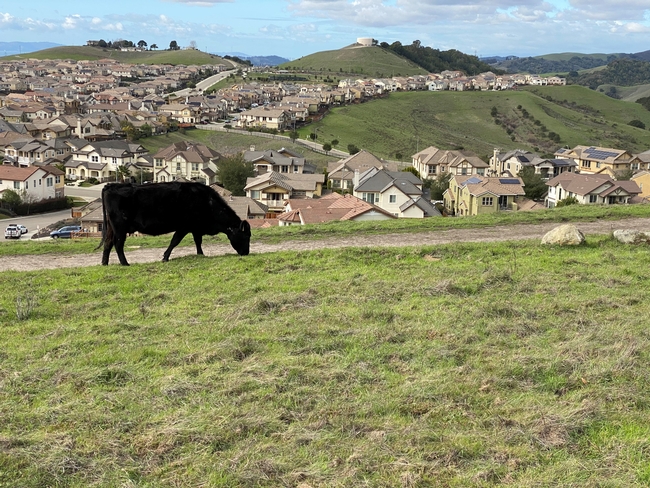New UC ANR publication educates public on cycles of cattle production, grazing and economics
The pandemic has brought more people into nearby parks and public lands for hiking, biking and other recreational activities. In areas like the East Bay Regional Parks – a San Francisco Bay Area park system totaling more than 120,000 acres where about 65% of the land is grazed by livestock – visitors might see goats, sheep and, most likely, cattle.
Those encounters with animals (or their manure) represent a prime opportunity for members of the public to learn about agriculture and the ecological benefits of rangelands, according to Larry Forero, a UC Cooperative Extension livestock and natural resources advisor.
As livestock grazing (mostly by beef cattle) constitutes a significant portion of land use across the state, Forero – along with fellow UCCE advisors Sheila Barry and Stephanie Larson – recently authored a UC Agriculture and Natural Resources publication summarizing the mechanics of cattle production.
“Beef Cattle on California Annual Grasslands: Production Cycle and Economics,” published in October and available as a free download on the UC ANR Catalog, describes the seasonal phases of cattle production and the factors that impact ranchers' financial calculations and management decisions.
“This concise publication walks through annual stock flows and calendar of operations and gives tables for estimating costs, return over cash, and gross income under various scenarios,” said Forero.
“Even if only a relatively small percentage of park goers are interested, you still touch a lot of people with a document like this,” Forero explained.
He said he hopes park signage and QR codes will direct visitors to the publication for more information about the cattle and their seasonal movements.
“People often wonder where the cattle go when they leave the park and when they will return,” co-author Sheila Barry said. “The cattle may go to grass or feed yards in other places in California or even out of state.”
But, as this new UC ANR publication explains, the cattle production cycle turns over anew.
“There will be more cattle next fall, I promise,” Barry said.




